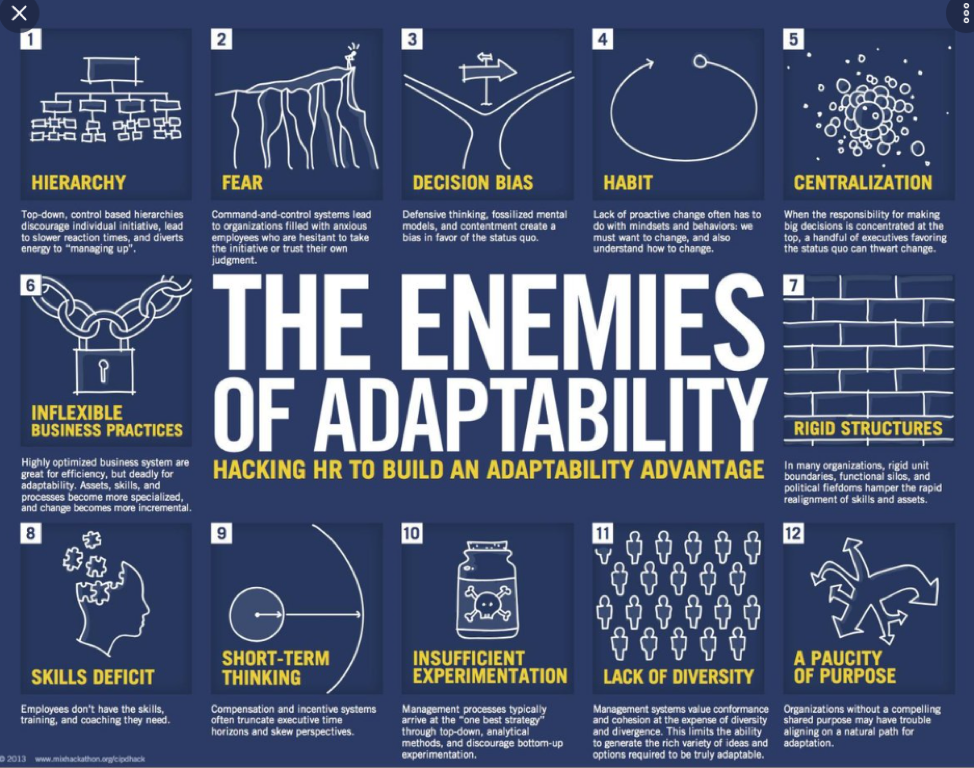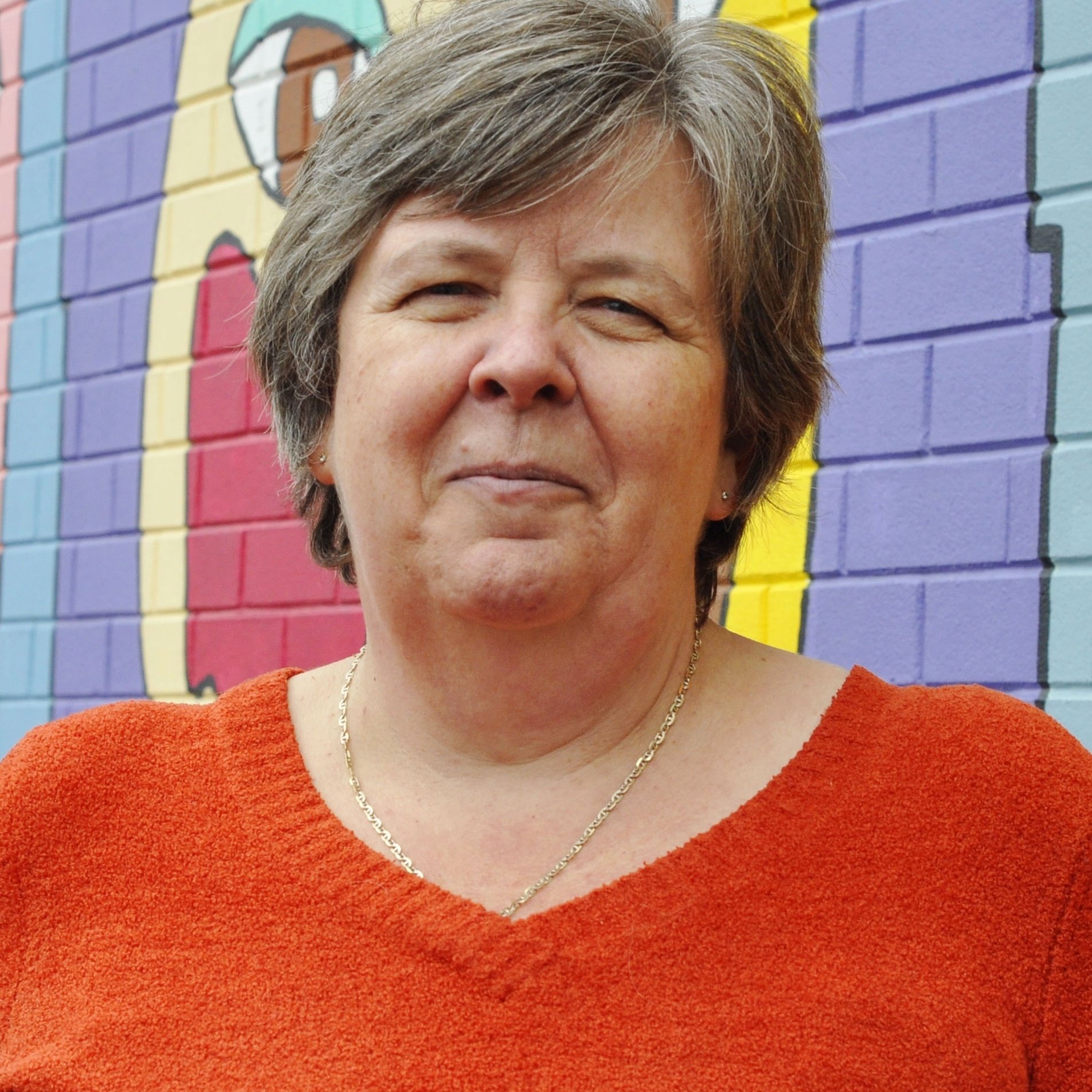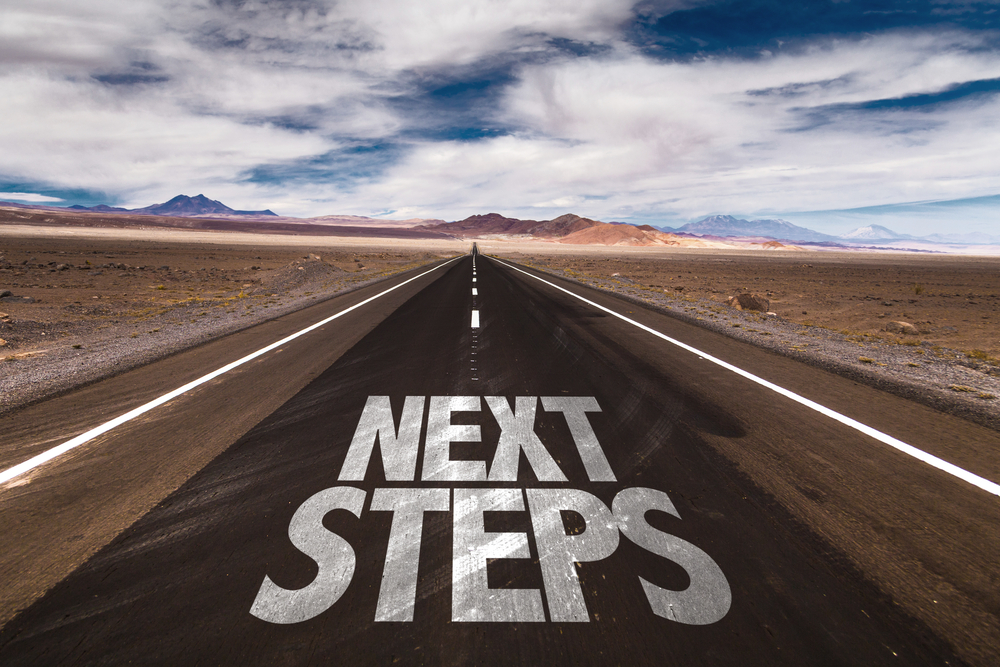 There are times when I am flipping through Twitter and I find a nugget of information that leads me to pause, reflect and then consider what is being shared and how this impacts my thinking about community change. With one tweet, Systems Innovation (@Sys_innovation) both asked and answered the question “what does it take to liberate the capacity of an organization?”
There are times when I am flipping through Twitter and I find a nugget of information that leads me to pause, reflect and then consider what is being shared and how this impacts my thinking about community change. With one tweet, Systems Innovation (@Sys_innovation) both asked and answered the question “what does it take to liberate the capacity of an organization?”
The answer was a pictogram titled The Enemies of Adaptability which highlights twelve elements which challenge adaptable approaches.

via @Sys_Innovation
The enemies of adaptability are useful signposts for community changemakers to avoid if they are trying to move the needle on community change. How often have changemakers been challenged because of traditional hierarchies which force levels of accountability rather than enable innovation and risk-taking?
Hierarchy, rigid structures, centralization, and inflexible business practices are structural barriers that prevent agility and adaptability.
Likewise, fear of possible failure or a changed future paralyze us from action. This is a human emotion that challenges the changemaking process. Likewise, a decision bias, habit, a skills deficit, and short-term thinking can be individual and group frailties which prevent innovative approaches from surfacing.
The final three enemies of adaptability are insufficient experimentation, lack of diversity and a paucity of purpose are flaws frequently found in the group or community change process.
What if we redesigned these enemies to become enablers of adaptability for effective community change processes?
- From Hierarchy to Community Engagement
- From Fear to Hope and Impact
- From Decision Bias to Innovation
- From Habit to Learning
- From Centralization to Decentralization
- From Inflexible Business Practices to Design Flexibility
- From Rigid Structures to Flexibility
- From Skills Deficit to Enabling Assets
- From Short Term Thinking to Focusing on Long Term Horizons
- From Insufficient Experimentation to Act, React and Adapt
- From Lack of Diversity to a Focus on Equity
- From a Paucity of Purpose to a Common and Shared Agenda
Enablers of adaptability build community change processes. Diversity, deep engagement, flexibility and an ability to tolerate ambiguity and tolerate risk are all ways to become more adaptable. In the context of community change, it is important to recognize that change happens when we are making change. Being open and adaptable is a definite advantage.
Learn More:
- Read Making Sense of the Multiple Faces of Leadership to learn about different types of leadership and how they can apply to your community change effort
- Read The Context Experts to understand the contribution of community members.
- Read 10 – Engaging People with Lived/Living Experience
- Interested in empowering citizen leadership? Join us for Citizens at the Centre: A Community Engagement Thought Leader Series travelling to Halifax, Ottawa, Toronto, Calgary, and Vancouver May 1-7





